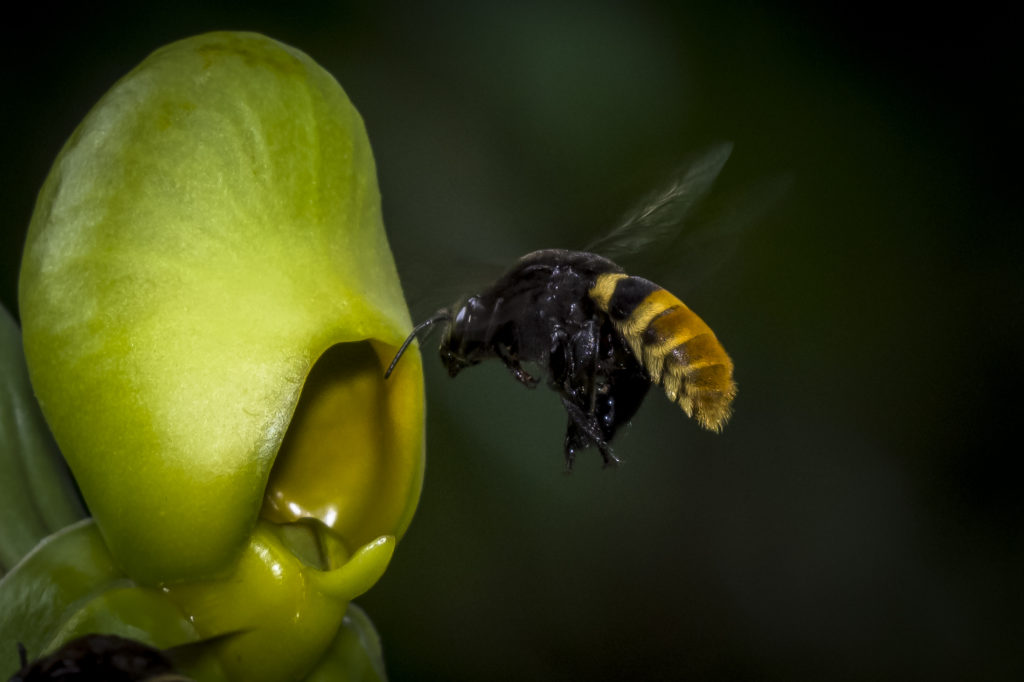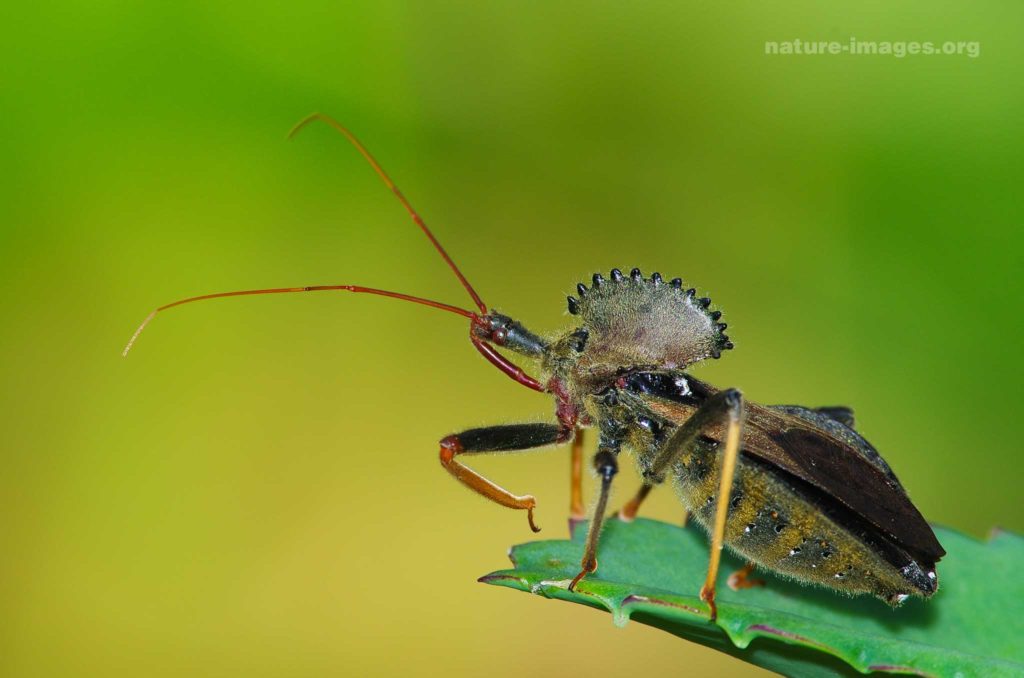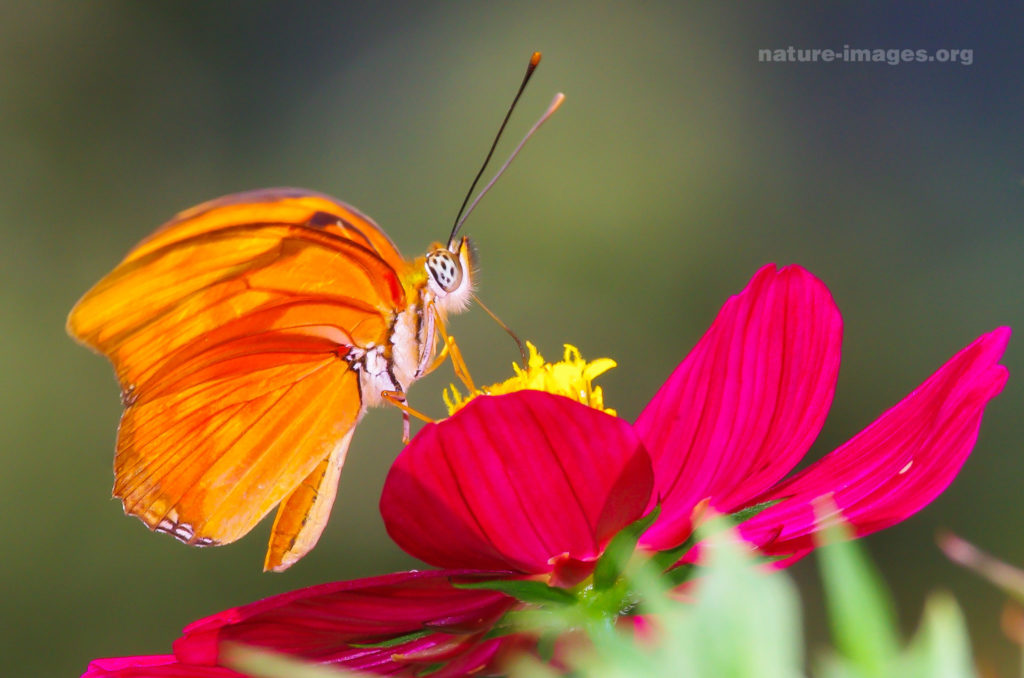Macro Photography Essentials
Budget-Friendly Equipment
Surprisingly, entering the world of macro photography of insects doesn’t have to empty your wallet. We’ve got you covered with a snazzy setup for under a hundred bucks. This helps make macro photography a reality without needing the high-end gadgets (Photography Life).
Wallet-Friendly Gear:
- Extension Tubes: These handy tubes help us get a close look without adding extra glass layers, making them perfect for beginners taking their first steps into macro.
- Reversal Rings: Flip your regular lens and voila! You’ve got yourself a macro lens on a budget.
- Clip-On Macro Lenses: Smartphoners, rejoice! These clip-ons let you zoom into the tiny world with ease and for cheap.
Table: Budget Gear for Macro Photos
| Equipment Type | Price Range ($) | Description |
|---|---|---|
| Extension Tubes | 10 – 20 | They extend the lens from the camera for magnified shots. |
| Reversal Rings | 5 – 15 | Mount your lens backward for close-up magic. |
| Clip-On Lenses | 10 – 30 | Snap-on to smartphones for amazing detail. |
Lens Selection for Macros
Picking out the right lens can take your close-up pics from meh to wow! A lens with a great magnification ratio (1:1 or better) is a must-have for this photography game. You’ll want something like a 90mm lens or longer so those shy bugs don’t scuttle away before you’ve got your shot (Photography Life).
Top Macro Lens Picks:
- 100mm Macro Lens: Lets you catch bugs from a distance without sending them packing.
- 60mm Macro Lens: Not as much distance, but easier on the pocket and the arms.
- Macros with Internal Focus: These keep their cool—even when focusing—so you don’t disturb the scene.
Table: Go-To Macro Lenses
| Lens Type | Focal Length | Maximum Magnification | Notes |
|---|---|---|---|
| 100mm Macro Lens | 100mm | 1:1 | Good distance, bug-friendly. |
| 60mm Macro Lens | 60mm | 1:1 | Lighter and cheaper. |
| Internal Focus | Varies | 1:1 or more | Stays the same size while focusing. |
Starting with the right tools gives you a solid launch pad for mastering macro photography. If you’re craving more skills and inspiration, check out our creative nature photography ideas and wildlife photography techniques.
Getting Started with Macro Photography
Macro photography is like opening a treasure chest of teeny-tiny details, especially when we’re focusing on bugs. To jump into this fun hobby of taking close-up pics of insects, we need to get cozy with our subjects, understand our gear choices like those special lenses, and even step into the super cool zone of super macro photography.
Exploring Macro Subjects
Get ready to spot a whole new world by starting with stuff that’s easy to find and shoot. Here’s what we mean:
- Flowers and Plants: Bursting with colors and those tiny little features that you never noticed before.
- Insects: Packed with wacky textures and patterns, these guys are born models for our lenses.
- Leaves: Check out those veins and nifty structures you didn’t see at first glance.
- Coins and Textures: Show off complex designs and surfaces that tell endless stories.
Kicking things off with these everyday subjects lets us flex our photo muscles and really get a grip on macro photography’s quirks. If you’re itching for more, have a peek at our nature photography tips.
Specialized Macro Lenses
Nailing the best pics is all about picking the right lens. A lens that gives you big-time zoom-in action, like 1:1 or better, makes you a macro superstar. Here’s the scoop on lenses many folks swear by:
- 90mm Lens: A crowd favorite ’cause it lets us snap shots without scaring off our tiny buddies.
- 100mm – 150mm Lenses: Offers a smidge more leeway and keeps us from getting too close for comfort.
- Extension Tubes: Cheap, no-extra-glass-needed way to hit that 1:1 magnification (Photography Life).
Super Macro Photography
Taking macro skills up a notch means exploring super macro shots. This calls for hardcore lenses that let us peek at details our eyes miss. Think:
- Insects: Snap those freaky-cool compound eyes and intricate wings.
- Leaves and Flowers: Zoom in real close to reveal tiny living patterns.
- Snowflakes: Capture the coolest of them all—unique icy designs.
Here’s a simple lens cheat sheet:
| Lens Type | Magnification | Best For |
|---|---|---|
| Standard Macro Lenses (90mm) | 1:1 | Everyday subjects like insects and blooms |
| Mid-range Macro Lenses (100mm – 150mm) | 1.5:1 | Bigger bugs, some extra range |
| Super Macro Lenses | 5:1 | Crazy detailed shots, specific insect parts |
Ready to level up with techniques and glance at wildlife photography techniques? Dive into our tips to sharpen your craft.
Starting with easy pics, investing in killer lenses, and jumping into the thrilling world of super macro photography means we get to grow our skills while snapping up nature’s tiny masterpieces.
Tips for Successful Macro Insect Photography
Getting up close and personal with bugs on camera—what a thrill! Nailing those detailed insect shots isn’t just about having the right gear; it’s also about smart techniques. Here’s how to make sure your macro insect adventures are picture-perfect.
Capturing Clean and Sharp Images
Crystal-clear insect photos won’t happen by accident. A tripod’s your best buddy here, paired with a delayed shutter to keep everything rock steady (Nature TTL). This duo is your ticket to shake-free snaps.
When it comes to focus, manual is often the way to go. Autofocus can get a bit twitchy in these scenarios, leaving you with more blurry shots than you’d like (Photography Life). Manual focusing lets you make those tiny adjustments, essential for dealing with the razor-thin depth of field typical in macro photography.
Importance of RAW Format
Shooting in RAW is like storing all your data from the camera, giving you more editing freedom later (Nature TTL). This helps you fiddle with exposure, color, and contrast without losing quality.
Insects are full of fascinating details—think the kaleidoscope on a butterfly’s wing or the exact lines on a beetle’s shell. RAW format helps you capture all that, using your camera’s potential to the fullest.
Maximizing Image Quality
Pump up your image quality by keeping these tricks in mind:
- Use Extension Tubes: They’re a budget-friendly way to hit that magic 1:1 magnification mark without sticking more glass on your lens (Photography Life). Your images stay sharp!
- Focus Stacking: Snap multiple shots at various focus points and blend them in post. The result? Sharpness all over the image (Nature TTL).
- Controlling Light: Lighting is everything! Use natural light and add diffusers for smooth shadows. If you’re all about artificial light, a ring light or twin flash kit ensures even lighting on tiny critters.
Here’s a quick rundown of tools and their benefits:
| Tool/Technique | Purpose | Benefit |
|---|---|---|
| Tripod & Shutter Release | Keep that camera steady | Sharper images |
| Manual Focus | Precision tweaking | Higher accuracy |
| RAW Format | Capture all the data | More editing freedom |
| Extension Tubes | Achieve close-ups without distortion | Keep image sharp |
| Focus Stacking | Mix various focuses | Image sharp throughout |
| Proper Lighting | Evenly light your subject | Fewer shadows, better details |
Stick with these strategies, and you’ll capture the beautiful, hidden world of insects like never before. If you’re hungry for more, check out where we share additional nature photography tips.
Techniques for Macro Insect Photography
Tripod Usage and Shutter Release
Getting up close and personal with insects requires steady hands—or better yet, a trusty tripod. When you’re zoomed in, even breathing the wrong way can make your image all wonky. A solid tripod keeps your shots steady and your focus razor-sharp. And let’s not forget the shutter release remote! Save yourself from the jiggles that come with pushing buttons. This combo is a lifesaver, especially when you’re zooming in so close that every little shake looks like and earthquake.
| Equipment | Why It’s Handy |
|---|---|
| Tripod | Holds the camera still, says bye to shakes |
| Shutter Release | Cuts out the wobble from button pressing |
Want to stabilize like a pro? Head over to our piece on wildlife photography skills.
Controlling ISO Settings
Cranking up the ISO in macro photography is like turning the volume up too high—things get messy. When you’re snapping bugs, you want crisp detail, not digital static. Keep that ISO low to capture all those teeny details and true-to-life colors. Trust us, ants with blurry fuzz just don’t have the same charm.
| ISO Level | Image Quality |
|---|---|
| Low (100-200) | Super detailed, noise stays quiet |
| High (800 and above) | Grainy-ville, population: your photo |
Juggling ISO, aperture, and shutter speed is a bit like spinning plates, but once you get it, it’s magic. For the deets, hop over to our nature photography tips.
Focus Stacking Benefits
Ever wish your macro shots had the sharpness of a hawk’s eye from front to back? Enter focus stacking. This nifty trick involves snapping a bunch of photos at different focus points and merging them to craft a masterpiece. The end result? Every tiny detail, from the bug’s toenails to its antenna, is in sharp focus.
Why Give Focus Stacking a Go:
- Depth that pops
- Unbeatable clarity
- Rich details to wow anyone
It’s a game-changer for capturing insects with tricky features. Think dragonfly eyes that look like disco balls or a butterfly’s wing art.
For the nitty-gritty on such skills, check out our piece on bird photography settings.
Get a grip on these methods—tripod finesse, ISO insight, and killer focus stacking—and watch your insect close-ups take flight. Show the world the tiny glamor of critters with striking detail. Need a creativity booster? Fly over to our creative nature photography ideas.
Advanced Techniques in Insect Macro Photography
Precision in Manual Settings
Getting those tiny details in insect macro photography isn’t a breeze. We dive into manual settings because autofocus tends to fail us when zoomed all the way in. That’s why we prefer manual focus lenses, as recommended by friends at Photography Life. By tweaking the focus ourselves, we ensure that every minuscule detail is crystal clear, especially with quick-moving critters.
- Use Focus Peaking: Let your camera do the highlighting of sharp spots for you.
- Electronic Viewfinder: Boost precision by peeking through an electronic viewfinder.
- Live View Mode: Get up close and personal with your subject by magnifying it on your screen.
Getting manual settings just right can make insect photos pop with clarity and detail like you wouldn’t believe.
Post-Processing Tips
We step into the digital darkroom with post-processing, a step as crucial as capturing the shot. Are you into combining multiple snaps for one super sharp image from front to back? Check out focus stacking as advised by Nature TTL. Here’s what we swear by:
- Focus Stacking: Merge a bunch of pictures taken at different focus points to get every part of the insect razor-sharp.
- Adjusting Exposure: Correct exposure blunders with your favorite software tools.
- Color Correction: Boost those natural hues to make your insect subject stand out.
- Noise Reduction: Smooth things out with noise reducers, especially for those high ISO shots.
Put the time into post-processing and watch your macro shots transform into visual masterpieces.
Utilizing Dedicated Macro Lenses
Our trusty companions, dedicated macro lenses, work wonders by capturing those tiny details in stunning clarity. When you’re shopping for one, remember to weigh focal length and aperture. An ideal pick will have no less than f/2.8 with a range of focal lengths for different shooting scenarios. Thanks, Great Big Photography World, for the heads-up!
| Lens Type | Focal Length (mm) | Best Use |
|---|---|---|
| Short Macro | 30-60 | Sneak into close-up details and tight spaces |
| Standard Macro | 90-100 | The jack-of-all-trades for varied distances |
| Long Macro | Over 150 | For timid bugs and keeping a respectful distance |
These lenses can take your insect photography to new heights. And if you’re looking for a budget-friendly hack, consider extension tubes to achieve that all-important 1:1 magnification without sacrificing quality, a hot tip from Photography Life.
Get your hands on these tools and lenses, and you’ll be snapping the intricate beauty of insects like a pro. Check out more on our section about wildlife photography techniques.
By nailing these tricks in manual settings, mastering post-processing, and using top-notch lenses, we’re all set to take our macro insect photography to a whole new level. Want more inspiration? Swing by our page on nature photography tips and creative nature photography ideas to feed your creativity and skills.
Insects in Macro Photography
Importance of Insects
We owe a huge thank-you to insects, our tiny friends, who do so much for us without asking for anything in return. From helping plants grow through pollination to turning waste into soil and keeping those pesky pests in check, they’re doing work worth about $70 billion in the U.S. alone (Florida Museum). Plus, let’s not forget their inspiration in tech innovations like drones shaped by their flight. Apart from their presence in nature, insects touch our daily lives too—think silk threads, sweet honey, and breakthroughs in science labs.
| What They Do | Value in Billions ($) |
|---|---|
| Pollinating Plants | 29 |
| Breaking Down Matter | 4 |
| Guarding Crops | 37 |
Numbers from: Florida Museum
Impact of Insects on Ecosystems
Without insects, lots of life’s links would break. They’re on everyone’s menu in the food chain and do the crucial job of recycling nutrients. Unfortunately, habitat destruction, pollution, and climate shifts are threatening their numbers, which could spell trouble for biodiversity worldwide. Experts warn: some of these critters might vanish in just a few decades (Florida Museum).
Taking photos of insects where they thrive spotlights how delicate our world’s balance is. Pictures can speak volumes to the beauty and necessity of these creatures and push conservation to the forefront of minds.
Highlighting Insect Behaviors
Getting up close and personal with insects in photos lets us see all the cool stuff they do. Ants, bees, and butterflies play out little dramas with social cues and teamwork that are often overlooked because of their tiny size. With many species still unknown, capturing their actions not only adds to our knowledge but also hints at the many ways they aid us, humans.
The trick to great photos is learning their habits. Most bugs prefer the sunniest parts of the day, but those bright rays can be tricky for photos (Nature TTL). A steady hand goes a long way, so a tripod and some trusty wildlife photography skills make all the difference for snagging clear shots.
Adding these lively subjects to your photo album doesn’t just celebrate nature’s fine details—it helps spread the word about their crucial roles and the urgency to shield their habitats. Looking for a spark of inspiration? Dive into our stash of creative nature photography ideas and capture what makes our planet so special.
Please bookmark us now press ctrl+d and visit again soon for more fascinating nature images! Here some recommended links selected for you: The Best Books of the Month, Todays best Deals at Amazon, Best Sellers in Cell Phones & Accessories and last but not least the easy and great way to send a gift for the holidays: Amazon.com eGift Card (Instant Email or Text Delivery).
A selection of Nature images, wildlife, flora and landscape stock photos, to see many more images and to license our stock photos please see our complete collection of our wildlife, flora and landscape stock images here at Alamy.
Introducing our captivating photo book showcasing the mesmerizing flora and fauna of Panama! Dive into the vibrant world of biodiversity with stunning imagery capturing the essence of Panama’s natural wonders. From majestic birds to elusive wildlife and breathtaking landscapes, this book is a visual feast for nature enthusiasts.
Don’t miss your chance to own a piece of Panama’s natural heritage. Order your copy here at Amazon now and embark on a visual journey through the enchanting landscapes and fascinating wildlife of Panama!






